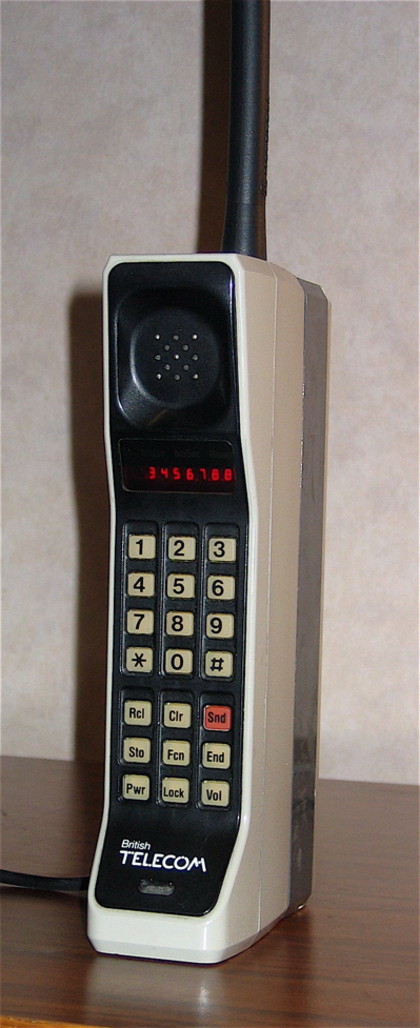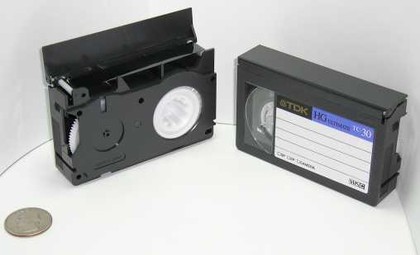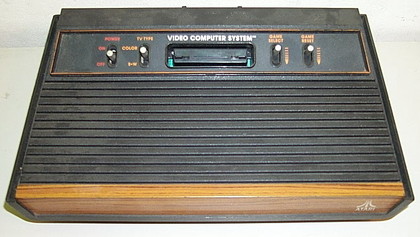8 technologies to thank the 1980s for
Not just a decade of bad hair, dodgy clothes and neon
5. The mobile phone
In the 1980s communication was, ahem, different. You wanted to phone someone? You went home or you walked to the nearest phone booth. Business and consumers were desperate for something that could make communication easier.
The concept of the mobile phone had been bandied about for several years, but limitations placed on the allocation of frequencies by the FCC hampered research until AT&T introduced the idea of the cellular system (read more).
Once the hurdle of frequency allocation had been resolved and the FCC had opened the way for further research, mobile phones were on their way.
Motorola launched the DynaTAC 8000x in 1983 with the dimensions of 300x44x89mm and weighing in at a lovely and light 785g. It proudly offered you about one hour of talk time, used an LED display and had an extremely attractive aerial - and it was the sweetest damn thing to own in the 1980s.

CALL ME: The sleek and sexy DynaTAC 8000x
6. The ZX Spectrum
Sign up for breaking news, reviews, opinion, top tech deals, and more.
Launched in April of 1982, the ZX Spectrum was a chic computer that you could have with either 16Kb RAM or 48kb RAM. Clive Sinclair, the brains behind the machine, created it in response to losing out to Acorn in a deal with the BBC.
The Acorn computers were clunky and expensive so Sinclair made a product that was both inexpensive and small: the ZX Spectrum.
The multiple function keyboard was more than a little fiddly and frustrating and the processing speed wasn't exactly brilliant but, boy, was it popular.
It offered users the chance to immerse themselves in the excitement of creating their own games and programmes using a superset of ZX-81 BASIC. Less than a year after its release software companies were rushing forward with games like Arcadia (Imagine), Ship of Doom (Artic) and Football Manager (Addictive).

AFFORDABLE COMPUTING: The rubber-keyed ZX Spectrum [Image credit: Bill Bertram]
7. The camcorder
It was in 1983 that 8mm movie cameras finally met their doom. This was the year when Sony and JVC launched the first ever camera-recorders, camcorders to you and me.
Sony stayed with the soon to be defunct Betamovie (Betamax) standard while JVC went with VHS-C.
It was a modern miracle. Gone were the hours of editing, the sweaty lugging around of tons of equipment, the sodden battery life and silent home movies, and in came instant home movies. That you could watch on your VCR. At home. With sound!

TAPE IT: The coin shows just how TINY these amazing storage tapes were!
8. Games consoles
The Atari 2600 was launched in 1977 with an 8-bit processor, 160x190 pixel resolution, 128 RAM and 128 colours.
For the next few years, along with others of its ilk, it limped along quietly until Space Invaders appeared in 1980. The popularity of this classic game shot consoles into the public domain at the speed of, ahem, light. Mattel's Intellivision and Pac Man hit the arcades in the same year, initiating the struggle for console dominance between Atari and Mattel.
A slew of products poured into the market from all directions resulting in the video game crash of 1983/84 which sent many to bankruptcy.
It was this very market collapse that had investors wary of putting money into Nintendo's new console, the Nintendo Entertainment System (NES). Thank heavens they did because its launch in 1985 broke all records and made video game history.

HOME GAMING: The Atari2600
- 1
- 2
Current page: Mobile phone, ZX Spectrum, camcorder, consoles
Prev Page Eight cool technologies from the eighties